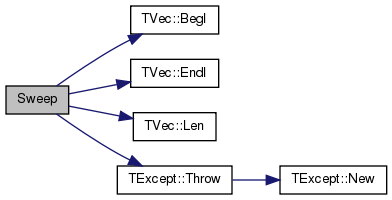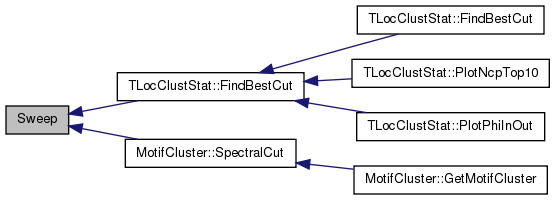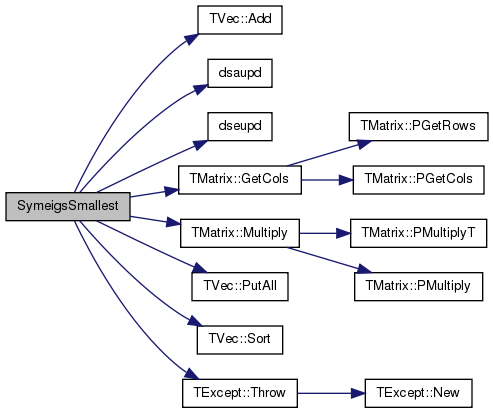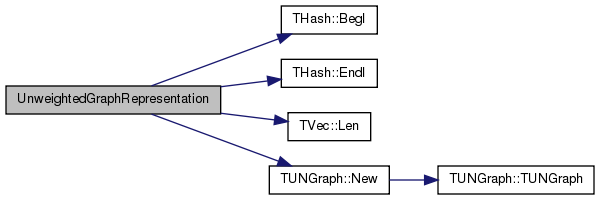|
SNAP Library 6.0, Developer Reference
2020-12-09 16:24:20
SNAP, a general purpose, high performance system for analysis and manipulation of large networks
|
|
SNAP Library 6.0, Developer Reference
2020-12-09 16:24:20
SNAP, a general purpose, high performance system for analysis and manipulation of large networks
|

Go to the source code of this file.
Macros | |
| #define | F77_NAME(name) name |
Functions | |
| void F77_NAME() | dsaupd (int *ido, char *bmat, int *n, char *which, int *nev, double *tol, double *resid, int *ncv, double *V, int *ldv, int *iparam, int *ipntr, double *workd, double *workl, int *lworkl, int *info) |
| void F77_NAME() | dseupd (int *rvec, char *HowMny, int *select, double *d, double *Z, int *ldz, double *sigma, char *bmat, int *n, char *which, int *nev, double *tol, double *resid, int *ncv, double *V, int *ldv, int *iparam, int *ipntr, double *workd, double *workl, int *lworkl, int *info) |
| static void | IncrementWeight (int i, int j, WeightVH &weights) |
| static PUNGraph | UnweightedGraphRepresentation (const WeightVH &weights) |
| static void | MapIdsToFirstN (const TIntV &ids, THash< TInt, TInt > &id_map, TIntV &rev_id_map) |
| static void | Sweep (const TSparseColMatrix &W, const TFltV &fvec, TFltV &conds, TIntV &order) |
| void | SymeigsSmallest (const TSparseColMatrix &A, int nev, TFltV &evals, TFullColMatrix &evecs, double tol, int maxiter) |
| #define F77_NAME | ( | name | ) | name |
Definition at line 7 of file motifcluster.cpp.
Referenced by SymeigsSmallest().
| void F77_NAME() dsaupd | ( | int * | ido, |
| char * | bmat, | ||
| int * | n, | ||
| char * | which, | ||
| int * | nev, | ||
| double * | tol, | ||
| double * | resid, | ||
| int * | ncv, | ||
| double * | V, | ||
| int * | ldv, | ||
| int * | iparam, | ||
| int * | ipntr, | ||
| double * | workd, | ||
| double * | workl, | ||
| int * | lworkl, | ||
| int * | info | ||
| ) |
| void F77_NAME() dseupd | ( | int * | rvec, |
| char * | HowMny, | ||
| int * | select, | ||
| double * | d, | ||
| double * | Z, | ||
| int * | ldz, | ||
| double * | sigma, | ||
| char * | bmat, | ||
| int * | n, | ||
| char * | which, | ||
| int * | nev, | ||
| double * | tol, | ||
| double * | resid, | ||
| int * | ncv, | ||
| double * | V, | ||
| int * | ldv, | ||
| int * | iparam, | ||
| int * | ipntr, | ||
| double * | workd, | ||
| double * | workl, | ||
| int * | lworkl, | ||
| int * | info | ||
| ) |
|
static |
Definition at line 29 of file motifcluster.cpp.
Referenced by MotifCluster::BifanMotifAdjacency(), MotifCluster::EdgeMotifAdjacency(), MotifCluster::SemicliqueMotifAdjacency(), MotifCluster::TriangleMotifAdjacency(), ChibaNishizekiWeighter::UpdateWeights(), and MotifCluster::WedgeMotifAdjacency().

|
static |
Definition at line 796 of file motifcluster.cpp.
References THash< TKey, TDat, THashFunc >::IsKey(), TVec< TVal, TSizeTy >::Len(), and TExcept::Throw().
Referenced by MotifCluster::SpectralCut().


|
static |
Definition at line 813 of file motifcluster.cpp.
References TVec< TVal, TSizeTy >::BegI(), TSparseColMatrix::ColSpVV, TVec< TVal, TSizeTy >::EndI(), TVec< TVal, TSizeTy >::Len(), MIN, and TExcept::Throw().
Referenced by TLocClustStat::FindBestCut(), and MotifCluster::SpectralCut().


| void SymeigsSmallest | ( | const TSparseColMatrix & | A, |
| int | nev, | ||
| TFltV & | evals, | ||
| TFullColMatrix & | evecs, | ||
| double | tol, | ||
| int | maxiter | ||
| ) |
Definition at line 955 of file motifcluster.cpp.
References TVec< TVal, TSizeTy >::Add(), TFullColMatrix::ColN, TFullColMatrix::ColV, dsaupd(), dseupd(), F77_NAME, TMatrix::GetCols(), MAX, MIN, TMatrix::Multiply(), TVec< TVal, TSizeTy >::PutAll(), TFullColMatrix::RowN, TVec< TVal, TSizeTy >::Sort(), and TExcept::Throw().
Referenced by MotifCluster::NFiedlerVector().


Definition at line 772 of file motifcluster.cpp.
References THash< TKey, TDat, THashFunc >::BegI(), THash< TKey, TDat, THashFunc >::EndI(), TVec< TVal, TSizeTy >::Len(), and TUNGraph::New().
Referenced by MotifCluster::SpectralCut().

